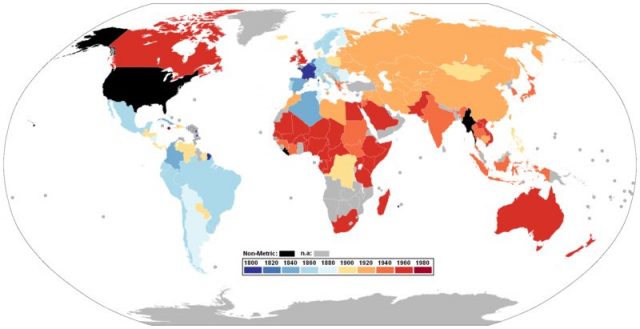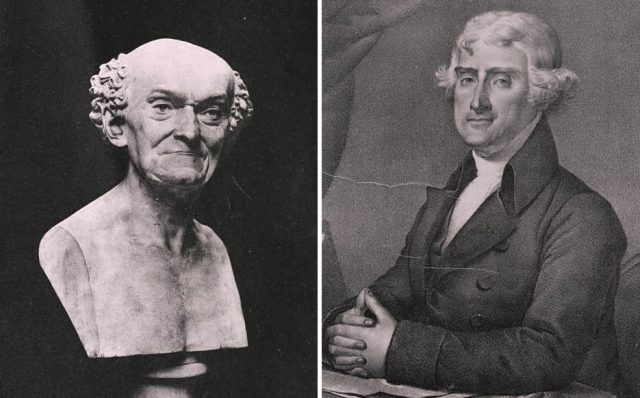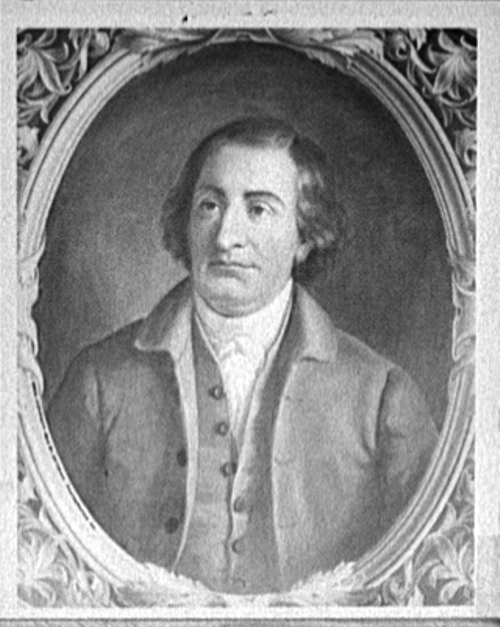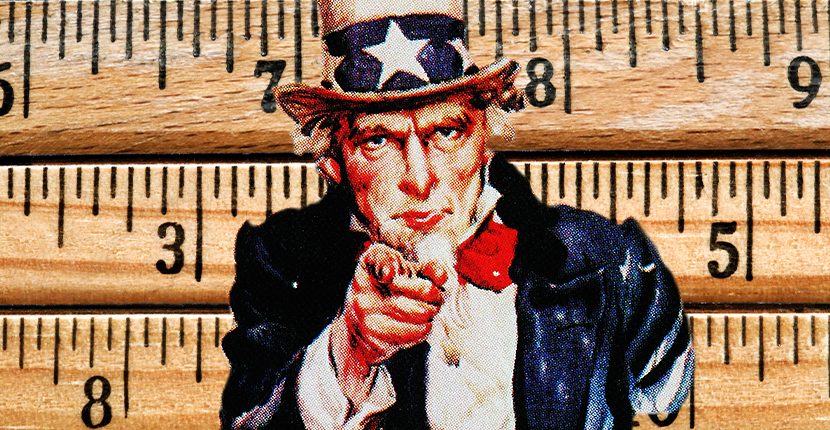America and the metric system have a long and complicated history. The metric system is acknowledged worldwide as a simple and effective means of measuring in all but 3 countries of the world. Yet in the United States it still hasn’t entirely caught on and we shall have to see if it ever will.
It’s certainly in extensive use, applied in areas like pharmacology and the military. But whereas other nations have embraced the metric system wholeheartedly, America saw it arrive in fits and starts. How come? Answering that question requires going back in time hundreds of years.
The Imperial system of measurement used by Americans can also been referred to as customary units. These are derived from English units, concepts of measurement which traveled across the ocean with the first settlers.

As for metric, its origins lay in France. Philosophers elegantly hammered out the details in the late 18th century, and it was hoped America would get on board, given their previous fruitful relationship on the battlefield.
In 2017 the New York Post wrote, “Since France had recently helped the U.S. win the Revolutionary War, the philosophers believed Dombey could easily persuade Jefferson to convince Congress to adopt the new system.”
Dombey was Joseph Dombey, a scientist, academic and aristocrat. Jefferson was of course Thomas Jefferson, the then Secretary of State. In 1793 the former was due to land on US shores to talk the matter through. He brought with him the physical representations of metric – a rod measuring 1 meter and a 1 kg copper cylinder.

It’s believed by some commentators that had these two men come face to face, the metric situation in America would have been resolved. Unfortunately the meeting never took place, though not for wanting of trying. Dombey ran into difficulties on the water, and was waylaid in dramatic circumstances straight out the pages of a maritime novel.
Having washed up in the Caribbean, he found himself at the mercy of pirates. Sadly the ambassador for a new way of doing things died while imprisoned. Technically it could be argued that these Captain Jack Sparrows sunk the prospects for metric.
Personnel changes in the form of new Secretary of State Edmond Randolph (1753 – 1813) delivered the killer blow. Edmond reportedly wasn’t concerned with a universal measuring system and so metric landed with a whimper rather than a bang.

A landmark piece of business was the Metric Act of 1866, brought to Congress by John Kasson. His report examined the dry issue of numbers, endeavoring to bring it to life within the corridors of power.
The website of USMA (U.S. Metric Association) quotes from the report which outlines some of the complications involved in America going metric. He says, “in some of the States, owing to the phraseology of their laws, it would be a direct violation of them to use it in the business transactions of the community. It is therefore very important to legalize its use, and give to the people, or that portion of them desiring it, the opportunity for its legal employment, while the knowledge of its characteristics will be thus diffused among men.”

The Metric Act wasn’t a legal requirement, and some industrial forces in the 19th century didn’t want the financial hassle of implementing changes. Throw in patriotism and an ardent sense of national identity as a factor, and it’s easy to see why the situation is so complicated. Nevertheless, there are those fighting to establish metric as the norm rather than a cultural add-on.
A Smithsonian Magazine from 2017 refers to the USMA which “argues that converting to the International System of Units (the modern form of the metric system, abbreviated as SI) would make international trade simpler…. It also argues that the decimalized metric system is simpler to work with.”
Related Article: A Pirate Attack in 1794 is why the United States doesn’t use the Metric System
At time of writing, America, Myanmar and Liberia are the only countries in the world yet to fully convert to metric. For some, they’re missing out on what the Post describes as a “a universal system of measurement that every industrialized nation uses except the U.S.”
Will America ever make it to the metric system? Only time will get the measure of that question.
